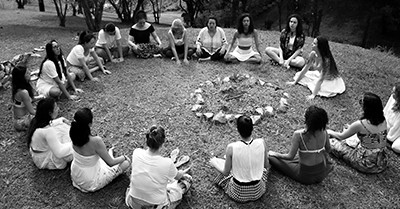Sharing circles are a powerful tool for fostering collaboration, reflection, and connection among educators in early childhood settings. They create a safe and inclusive space where educators can share experiences, challenges, and successes, promoting professional growth and emotional well-being. Here are some insights and ideas based on the concept of sharing circles.
What Are Sharing Circles?
Sharing circles are structured gatherings where participants sit together in a circle to share thoughts, ideas, and stories. They emphasize active listening, mutual respect, and open communication. In early childhood education, sharing circles can be used to:
- Reflect on teaching practices.
- Discuss challenges and brainstorm solutions.
- Celebrate successes and milestones.
- Build a sense of community and belonging among educators.
Benefits of Sharing Circles
- Fostering Collaboration: Sharing circles encourage teamwork and the exchange of ideas, helping educators learn from one another.
- Promoting Reflective Practice: Educators can critically evaluate their experiences and connect theory to practice.
- Enhancing Emotional Well-Being: Sharing circles provide a supportive environment where educators can express their feelings and receive encouragement.
- Strengthening Relationships: They build trust and mutual respect among team members, creating a positive workplace culture.
How To Implement Sharing Circles
Implementing sharing circles in early childhood settings can be a transformative way to foster collaboration, reflection, and emotional well-being among educators. Here’s a step-by-step approach to setting up and sustaining effective sharing circles:
1. Define the Purpose and Goals
Before starting, clarify the objectives of the sharing circle. Is it meant for professional reflection, emotional support, brainstorming solutions, or celebrating successes? Having a clear purpose helps participants engage meaningfully.
2. Establish Ground Rules
To create a safe and respectful space, set guidelines such as:
- Active listening without interruptions.
- Speaking from personal experience using "I" statements.
- Maintaining confidentiality.
- Avoiding judgment or offering unsolicited advice.
3. Choose a Facilitator
A facilitator helps guide the conversation, ensures inclusivity, and keeps the discussion focused. This role can rotate among participants to encourage shared leadership.
4. Select a Format
Decide how the sharing circle will be structured.
- Open Sharing: Participants speak freely about their experiences.
- Prompt-Based Discussion: A guiding question or theme is introduced.
- Reflective Round: Each person shares a takeaway or insight at the end.
5. Create a Comfortable Environment
Arrange seating in a circle to promote equality and connection. Consider using a "talking piece" (an object passed around to indicate whose turn it is to speak) to encourage mindful communication.
6. Encourage Participation
Some educators may be hesitant to share. Start with lighter topics or invite voluntary contributions before moving into deeper discussions.
7. Reflect and Follow Up
At the end of each session, summarize key insights and discuss any actionable steps. Follow up in future circles to track progress and maintain continuity.
8. Adapt and Evolve
Regularly assess the effectiveness of the sharing circle and make adjustments based on participant feedback. This ensures the practice remains relevant and beneficial.
Examples of Sharing Circle Topics
- Reflecting on a recent classroom activity or project.
- Discussing strategies for managing challenging behaviors.
- Sharing ideas for incorporating cultural diversity into lessons.
- Exploring ways to support children's emotional development.
- Celebrating individual and team achievements.
Sharing circles can transform the dynamics of an early childhood education team, creating a culture of collaboration, reflection, and mutual support.
Further Reading
Communicating Effectively With Staff
How to Boost Team Morale In Early Childhood Setting
How to Improve Team Meetings In Early Childhood Settings
Building Relationships with Families and Co-Workers







 As an Educator in Australia, your pay rate falls under the Children’s Services Award 2010. This award states the minimum amount that an employer can
As an Educator in Australia, your pay rate falls under the Children’s Services Award 2010. This award states the minimum amount that an employer can When working as a qualified Early Childhood Teacher (with a university degree) within a service, your rate of pay will come from the Educational Services
When working as a qualified Early Childhood Teacher (with a university degree) within a service, your rate of pay will come from the Educational Services When working as a Diploma Qualified Educator your pay rate is from the Children's Services Award 2010. This Award states your minimum rate of pay
When working as a Diploma Qualified Educator your pay rate is from the Children's Services Award 2010. This Award states your minimum rate of pay When working as a Cert 3 Qualified Educator, your pay rate is from the Children's Services Award 2010. This Award states your minimum rate of
When working as a Cert 3 Qualified Educator, your pay rate is from the Children's Services Award 2010. This Award states your minimum rate of Educational Leaders play a crucial role in their early childhood service by ensuring that the educational program aligns with best practices and supports the holistic
Educational Leaders play a crucial role in their early childhood service by ensuring that the educational program aligns with best practices and supports the holistic In early childhood education and care, ratios are more than a technicality—they are a frontline safeguard. Every child deserves responsive supervision, emotional connection, and developmental
In early childhood education and care, ratios are more than a technicality—they are a frontline safeguard. Every child deserves responsive supervision, emotional connection, and developmental Here’s a comprehensive Mobile Phone and Smart Watch Policy tailored for early childhood education and care (ECEC) services in Australia, aligned with the latest 2025
Here’s a comprehensive Mobile Phone and Smart Watch Policy tailored for early childhood education and care (ECEC) services in Australia, aligned with the latest 2025 With the new national child safety reforms kicking in on 1 September 2025, early childhood services like yours have a real opportunity to lead the
With the new national child safety reforms kicking in on 1 September 2025, early childhood services like yours have a real opportunity to lead the The Sea of Fish Challenge is a national initiative that invites children, educators, families, and communities to create and display fish artworks as a symbol
The Sea of Fish Challenge is a national initiative that invites children, educators, families, and communities to create and display fish artworks as a symbol Across the early childhood education and care sector, educators are sounding the alarm: current staffing ratios are insufficient to deliver safe, meaningful, and developmentally appropriate
Across the early childhood education and care sector, educators are sounding the alarm: current staffing ratios are insufficient to deliver safe, meaningful, and developmentally appropriate


